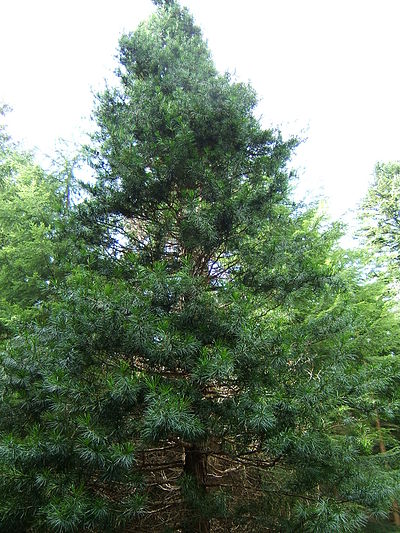
Wikipedia description
Sciadopitys verticillata, koyamaki, or Japanese umbrella-pine, is a unique conifer endemic to Japan. It is the sole member of the family Sciadopityaceae and genus Sciadopitys, a living fossil with no close relatives, and known in the fossil record for about 230 million years.
Its genus name comes from the Greek prefix sciado- meaning "shadow" and pitys, meaning "pine"; the specific epithet means "with whorls".
It is an evergreen tree that can grow 15–27 m tall, with brown main shoots bearing whorls of 7–12 cm long flexible green cladodes that look like, and perform the function of, leaves but are actually composed of stem tissues; occasionally, a cladode will be forked and produce a bud in the 'v' of the fork. The cones are 6–11 cm long, mature in about 18 months, and have flattish scales that open to release the seeds.
It is a very attractive tree and is popular in gardens, despite its slow growth rate.
A symbolic representation of the tree (known in Japanese as kōyamaki) was chosen as the Japanese Imperial crest for Prince Hisahito of Akishino, currently third in line to the Chrysanthemum Throne.
The plant was first introduced to Europe by John Gould Veitch in September 1860.
There is debate on what plant family Baltic amber was produced by, with macrofossil and microflossil evidence suggesting a Pinus relative, while chemical and infrared microspectroscopy evidence suggests relatives of either Agathis or Sciadopitys.
Scientific classification
Samples